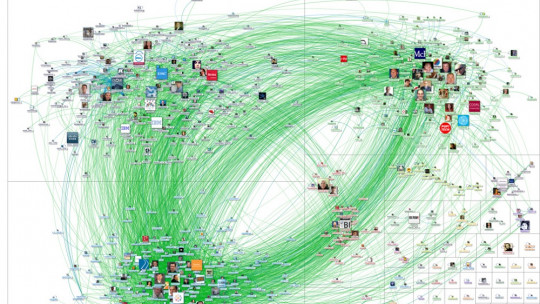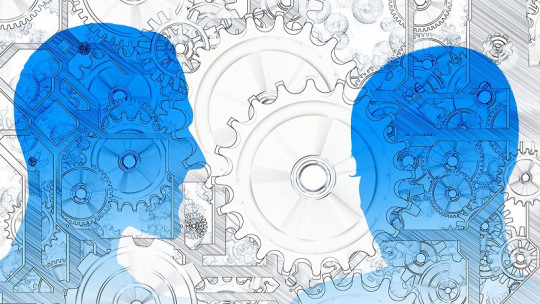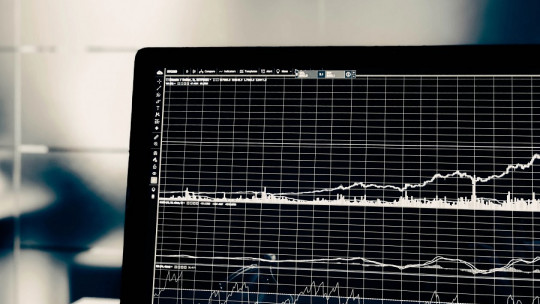For a couple of centuries we have been able to observe how technological development has accelerated spectacularly. In fact, we are in a time in which every few years new advances of great relevance emerge in different areas and that can also represent a significant advance in the development of other disciplines. Among these we can find “Big Data” technologies, which greatly facilitate data analysis. And this can be taken advantage of by disciplines such as psychology Can you make a profitable relationship between Big Data and Psychology? In this article we are going to talk about it.
Big Data: what is it?
Before moving on to see the type of relationship that may exist between Big Data and psychology, it is necessary to make a brief mention of what Big Data technologies are or imply.
By Big Data technologies we understand all those technology that allows the recording, processing and analysis of large amounts of information in gigantic data repositories (Big Data itself would refer to the high volume of data), of such a size that its capture, management, analysis and processing through conventional means would be complex and expensive.
This allows all these processes to be carried out at high speed, often even in real time, some of great use in multiple disciplines and that allows knowing the current state of different processes or elements to be analyzed. The collection of all this data is common today through different applications and networks, asking us for the possibility of managing, recording and using part of the data stored in them and its very use may represent an element that provides information regarding a specific theme.
The information that is part of these repositories refers to both structured and unstructured data, in such a way that they can include a large amount of both quantitative and qualitative information and of different levels of complexity. We could be talking, for example, about the behavior of citizens from all over Europe on Facebook, or about all the information available on the web about our lives, or complete data about the different tasks, payrolls and positions that all members of a company occupy. It could also be used to analyze each of a person’s gestures throughout an interview.
Big Data and Psychology: a profitable relationship?
There are multiple branches of science and knowledge that can benefit from the use of this technology in order to generate greater knowledge and benefit for the population, as well as for purely commercial use. Among the disciplines for which the use of Big Data can be useful is psychology.
In this sense, Big Data allows us to obtain a large amount of information regarding human behavior and the mental processes behind it, whether or not we are dealing with aspects related to health. It allows us to analyze behavioral patterns and their possible effects by extrapolating data collected by different means. Expressions and trends are very easily visible, as well as the contrast of specific data with respect to typical patterns.
Comparison with other subjects is also facilitated. Likewise, thanks to the rapid comparison of traits and different types of data, new explanatory models of the functioning of different pathologies or social movements could be created, for example. Incorporating Big Data into psychological practice in its different areas of application is an element that allows us to accelerate the collection of information, the making of forecasts and the possibility of establishing and developing different prevention policies.
It is necessary, however, to keep in mind that Big Data It will only reflect raw data , it is our task to determine whether or not said data are substantiated, if they have any implications, which are or are not useful or how they should be interpreted. We should not overestimate its importance or rely completely on the data obtained by this means, as it is much easier to reflect relationships between variables the larger the sample. And a much more relevant aspect: the ethical implications that the collection of large volumes of personal information may have must be assessed in great depth, requiring limits to be established between the use of useful information and the collection of unnecessary information to achieve the intended objectives.
Various psychological areas in which Big Data can be very useful
The arrival of Big Data technologies, due to the possibilities they offer when analyzing large amounts of data, can be very useful in many different areas of psychology. In order to make it clearer, below we cite some examples of areas in which you can find a beneficial relationship between Big Data and psychology.
1. Marketing and advertising
One of the areas in which Big Data and psychology can go together and that are most evident is marketing and advertising. This is one of the most commercial and at the same time best known purposes of this relationship, being common in social networks and online advertising. In this sense, searches, keywords and behavior on the networks by users are analyzed, in principle with prior consent (although the use of many networks implies acceptance of the right to record and use that data).
2. Human resources and work environment
Another area in which it is common to observe the relationship between both elements is in the workplace. Especially in relation to human resources and personnel selection, the use of Big Data can make it possible to select and analyze the behavior, way of acting, opinions, tastes and abilities of candidates, as well as Register and assess what type of profiles best fit the company
Once inside the company, it can allow us to assess the performance and performance of employees, the presence of elements that modify them, their level of satisfaction with the work and the tasks performed or even the type of interaction between the different work teams. .
3. Clinical psychology
Although it is not as visible as in the case of the previous ones, it is also possible to take advantage of the potential of Big Data technologies at the level of clinical practice. Detect depressive behavior patterns, suicidal tendencies , anomalous or delusional thoughts (for example from internet searches) or even basic personality types are some of the options that Big Data offers. The amount of information processed allows us to introduce and take into account various aspects that may be influencing the possibility of suffering from some type of psychopathology.
Risk and protective factors can also be assessed the factors that influence epidemiology and prognosis, the presence of differential aspects in each case or the effectiveness or progress made during the administration of treatments are examples.
4. Forensic psychology
Forensic psychology and criminology can also benefit from the use of these technologies. Analyze data regarding a subject or a crime, behavioral patterns criminal profiles, witness accounts or the experience or expressions of both the victim and the perpetrator can more easily allow the analysis of cases, the search for explanations, evidence or possible perpetrators or even the possibility of a criminal’s recidivism.
5. Research
Probably the sector that can find the most usefulness in the use of Big Data, and that in turn will allow advances in all others, is research (both in psychology and outside of it).
Assess the presence of certain variables (including pathologies) in the population, the impact that a certain event or movement has generated, the behaviors and opinions expressed the opinion raised by certain topics, the impact of certain products, the way of grouping and relating or cultural expression and its effects on the life of the population are some examples of elements that can be taken into account and analyzed more easily.









